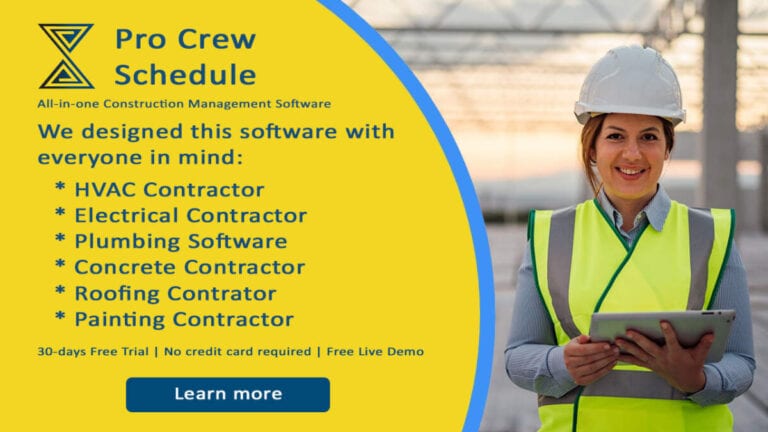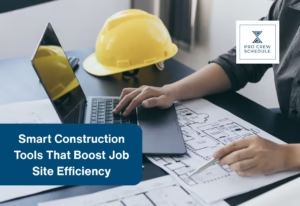The construction industry is known for being highly behind modern technology and a hazardous field. While the latter is still one of the industry’s top concerns, modern technology is slowly but surely making its way in and the industry is adapting.
Although it still heavily relies on manual labor, the construction industry has since evolved from using hard hats and simple heavy machinery. Aside from working and managing construction projects with better efficiency and productivity, the advancement of technology has significantly improved construction safety.
Construction technology for site safety
1. Virtual Reality (VR)
Virtual reality simulators, which put a person in a virtual world, have been in use for quite some time by other professions like aviation and medicine. It’s recently been taking off in construction as a tool to train workers in site tasks, from welding and masonry work to operating heavy machinery.
In 2016, Bechtel Construction launched a safety training program that uses VR. With software to replicate the project site, construction workers and trainees can safely interact with the environment.
Gammon Construction Limited has also been using virtual reality to train its workers. The training was found to be more effective than lectures because the trainees were more engaged. Moreover, the VR training shifted the worker’s mode of thinking, boosting safety on site.
2. Augmented Reality
As opposed to virtual reality, augmented reality puts aspects of the virtual world in the real world. Data and images can be overlaid onto the actual site. Architects, contractors, and clients can then collaborate in real-time to see and make necessary changes to the plans before execution.
AR technology is beneficial in spotting safety issues and hazards. With that, contractors and planners can fix them, thus reducing risks associated with the project.
3. Wearables
Wearable technology is revolutionizing safety on job sites. For one, this technology can be used to detect falls. The Spot-r by Triax Technologies, for example, is a small piece of tech that effectively monitors the workers. This clip-on device provides workers a direct communication line to report accidents, hazards, and injuries with just one push. Connected to a wireless network, the device constantly reports worker locations, allowing managers to monitor their crew 24/7.
The Spot-r can also detect free falls, which one of the “Fatal Four” in construction. Once seen, the device will immediately snd out a notification asking for help, improving injury response time by more than 90%.
With this kind of tech, falls are instantly reported, even if the person falls unconscious.
4. Exoskeletons
Construction work is physically intense– lifting heavy objects and long periods of working with heavy tools– that often result in bodily strains and musculoskeletal disorders. To limit the stress on workers’ bodies, exoskeletons provide support when carrying heavy objects and even enhances body posture.
There are two types of exoskeletons: unpowered and powered. Powered exoskeletons mainly redistribute loads, making heavy lifting more comfortable. It distributes the user’s weight to stronger muscles as not to strain the weaker ones. On the other hand, powered ones are more advanced and use a network of motors and sensors to help with heavy lifting.
5. Drones
Drones have a myriad of functions on project sites, from surveying the site to inspecting structures to track progress.
With this piece of technology, construction sites are safer. Instead of having an inspector go through physical walkthroughs, drones can quickly conduct inspections and identify potential safety risks and hazards every day. This better works with 3D, VR, or AR technology. The team can then immediately work on fixing the issues.
Lastly, drones can also help managers monitor the crew. With a quick sweep of the site, managers can check if workers are working safely.
6. Site sensors
Besides physical injuries from strain and accidents, workers can also sustain other health issues when exposed to harmful and toxic materials, like asbestos. Prolonged asbestos exposure has several adverse health effects, primarily reduced respiratory function. An enlargement of the heart can also occur as an indirect result of increased blood flow resistance to the lungs.
Fortunately, site sensors can detect toxins in building materials or the air. They do this by taking environmental readings and interpreting them to identify harmful compounds.
In addition to that, site sensors measure other environment safety indicators like moisture levels and temperature. With safety measures determined, workers’ exposure to harmful materials and conditions can be limited or avoided.
7. Carbon monoxide-detecting hard hats
Aside from asbestos, carbon monoxide is another dangerous compound that can be found on project sites. This is scary because it can appear on even the “safest” project sites it’s challenging to detect. It may be too late when life-threatening injuries cannot be prevented.
Carbon monoxide displaces oxygen in the blood and cuts it off from vital organs, such as the brain and heart. Breathing in large amounts of this harmful gas can overcome the person within minutes, making them unconscious and even suffocate.
A hard hat is a vital protective gear that protects the wearer from falling debris and other objects. But today, the hard hat has been innovated by fitting carbon monoxide sensors, making the job site safe for employees, as well as other visitors. With this innovation, construction workers will know early on if an area is unsafe due to the gas. They can then take measurements to handle the situations so no one else is compromised.
8. Self-driving vehicles
For decades the construction industry has been relying on simple heavy-duty vehicles and machinery. Unfortunately, these types of equipment have been associated with accidents, safety risks, and concerns. No matter how skilled the operator, human error can still occur, compromising the worker’s safety, as well as the people surrounding them.
However, automized vehicles significantly improve onsite safety, reducing safety risks and even eliminating human error. In addition to safety, autonomous construction vehicles impact efficiency and productivity substantially. They can do a range of tasks like leveling the ground and pushing heavy materials.
Companies like Built Robotics have integrated AI into heavy-duty vehicles and equipment to run completely automated.
9. Robotics
Robotics has made numerous contributions to the construction industry, including significantly improved worksite safety. Robots can take over mundane and repetitive tasks, allowing workers to avoid overexertion and bodily stress.
An example of a robot taking over and automating repetitive tasks is the Tybot working on rebar on bridges. Without the robot, workers are suspended in the air while they tie rebar to bridge bridges. Several risks arise here, like the tether snapping. However, if the Tybot takes on the task, workers will be safe on the ground and only need to frame around 10% of the bridge before letting the machine take over.
If you want to know more about robotics and its role in the construction industry, read our article “Types Of Robots Helping The Construction Industry.”
10. Mobile applications
In today’s day and age, mobile phones are a necessity. Because of its convenience, the construction industry has been developing various software and apps. Usually, contractors use their phones to use project management software to aid them during planning and construction. But now, worker safety can be monitored with an app.
The Stay Safe App is made for lone workers to keep them safe and protected. It allows them to start a timed session before starting an isolated work period, making monitoring their activity more comfortable. The GPS is then triggered and a countdown begins visible to those who have access to the platform.
In addition to tracking workers, the app also has a panic button that workers can press to send an instant alert if they find themselves in trouble or require urgent assistance. Plus, the Stay Safe App has a man-down feature that monitors employee movement. If the app detects that the person has not moved more a long time, it sends out distressed calls.
How construction scheduling software improves safety on construction sites
When contractors think of project management software benefits, they usually only see them in terms of efficiency, productivity, and organization. However, this piece of technology has an indirect impact on safety.
a. Clear communication
Miscommunication can lead to a slew of risks. To avoid such from happening, contractors can use project management software like Pro Crew Schedule to communicate with their crew effectively.
Even when they’re on the project site together, both parties can still collaborate in real-time. Plus, because most of these kinds of software are cloud-based, essential documents and photos can be safely stored and easily shared.
b. Better crew management
Contractors have their plates full almost all the time. But with management software, they can stay on top of things. They can fluidly schedule tasks and jobs, monitor crew activity, and even track workers’ time-ins and time-outs. With that, they will be able to boost efficiency and productivity.
If you’re a contractor in need of effective and efficient project management software, use Pro Crew Schedule’s Software. Sign up today and get a free 30-day trial with all its features and no strings attached. Request a demo here.







